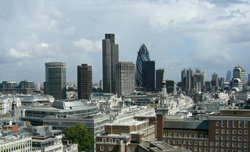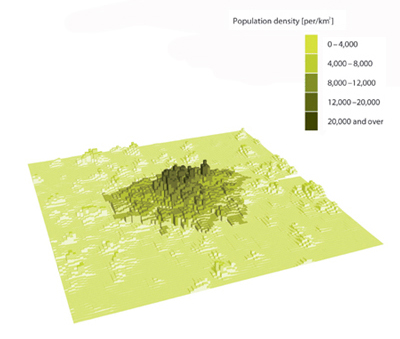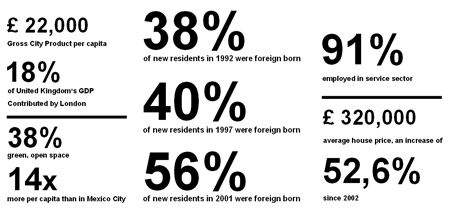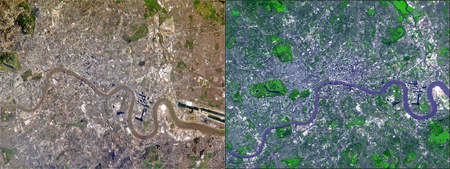London (1/2)

Photo: Anika Donner
London was the starting point of the worldwide urbanization process and it was the largest city on Earth until the beginning of World War I. This first modern 'megacity' was fuelled by the Industrial Revolution and is now one of the four world cities (New York, Paris and Tokyo) (Burdett 2007, Gresh 2007).
The City of London was established as a mercantile centre within the walls of ancient Roman Londinium. Now, after decades of decline it once again faces a period of intense growth in the last decades. Within 20 years, London's population has grown from 6.7 million to 7.5 million residents. This number is projected to rise to over 8 million by 2015. The population is relatively thinly spread, with a gross population density of 4,795 people/km². Greater London, a wider metropolitan city region covering the south-east of England is home to over 19 million people, many of whom commute to London daily (Burdett 2007, Travers 2007, The Urban Age Project).
The growing population of London is largely due to migration; in the last 10 years, more than 95% of immigrants to London were born outside the United Kingdom. London is facing an unprecedented period of growth and change in the 21st century. According to a PriceWaterhouseCoopers report it became the most expensive city on Earth in 2007 (Burdett, Rode 2007, Burdett 2007, Sudjic 2007).
London is a polycentric city with large green parks, open and recreational space and with many local hubs that form the focus of diverse residential communities, an intense street culture of markets, cafes and commercial activities (Burdett 2007).
Tasks: Compare the two images with each other and with the atlas.
1. Find corresponding points on both images.
2. Describe and explain the different perspectives.
In recent times London, a service-led urban economy with a global orientation, has experienced significant economic growth. Currently its Gross City Product is estimated at US$ 49,000 per capita contribution. It accounts for 18% of the UK´s national economy with just 12% of the entire population. London´s creative industries, advertising, media, fashion and design, now provide even more jobs (over 500,000) than financial services (Burdett 2007, The Urban Age Project).

Source: The Urban Age Project
But not all Londoners are participating in economic growth. Social deprivation is visible as pockets of 'poverty' are scattered across inner London, often in close quarters with the highest concentrations of wealth. While strong corridors of deprivation remain in South and East London, most of the outer suburban London is relatively comfortable and stable. London's population suffers from the second-highest unemployment rate in England, and 43% of children in inner London live in poverty (Burdett 2007, The Urban Age Project).
Critical to London's survival as a fair and balanced city is the creation of compact, mixed-used neighbourhoods, well-served by public transport. The future growth of the city should be accommodated within London's existing boundaries. The greatest opportunity of all is the holding of the 2012 Olympics in the Lower Lea Valley, a deprived eastern city region (Burdett 2007, Burdett, Rode 2007).

Source: Burdett 2007
Task: 1. Use the figures and text to describe and explain London's characteristics.

